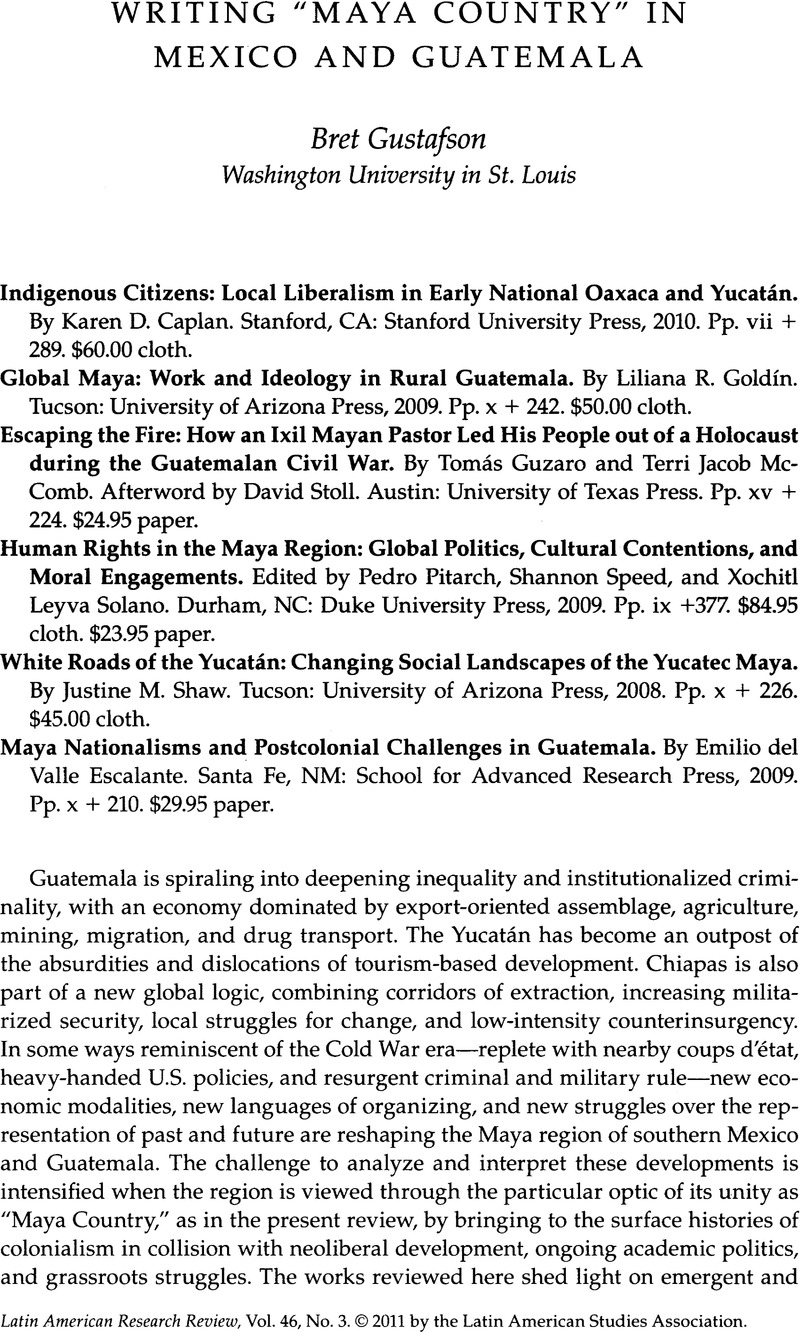No CrossRef data available.
Article contents
Writing “Maya Country” in Mexico and Guatemala
Review products
Published online by Cambridge University Press: 05 September 2022
Abstract

- Type
- Review Essays
- Information
- Copyright
- Copyright © 2011 by the Latin American Studies Association
References
1. Greg Grandin, Who Is Rigoberta Menchú? (London: Verso, 2011).
2. Carol Hendrickson, Weaving Identities: Construction of Dress and Self in a Highland Guatemala Town (Austin: University of Texas Press, 1995); Edward F. Fischer, Cultural Logics and Global Economies: Maya Identity in Thought and Practice (Austin: University of Texas Press, 2001); Walter E. Little, Mayas in The Marketplace: Tourism, Globalization, and Cultural Identity (Austin: University of Texas Press, 2004); Edward F. Fischer and Peter Benson, Broccoli and Desire: Global Connections and Maya Struggles in Postwar Guatemala (Palo Alto, CA: Stanford University Press, 2006).
3. Liliana Goldín, “Labor Ideologies in the International Factories of Rural Guatemala,” Latin American Perspectives 32 (2005): 59–79.
4. “When will you learn about and take up the cultural thinking and lived knowledge practices of the diverse Maya peoples?” My thanks to Doc Billingsley and his colleagues at the Academy of Maya Languages for translation help.
5. Abigail Adams, “The Transformation of the Tzuultaq'a: Jorge Ubico, Protestants and Other Verapaz Maya at the Crossroads of Community, State and Transnational Interests,” Journal of Latin American Anthropology 6, no. 2 (2001): 198–233.




